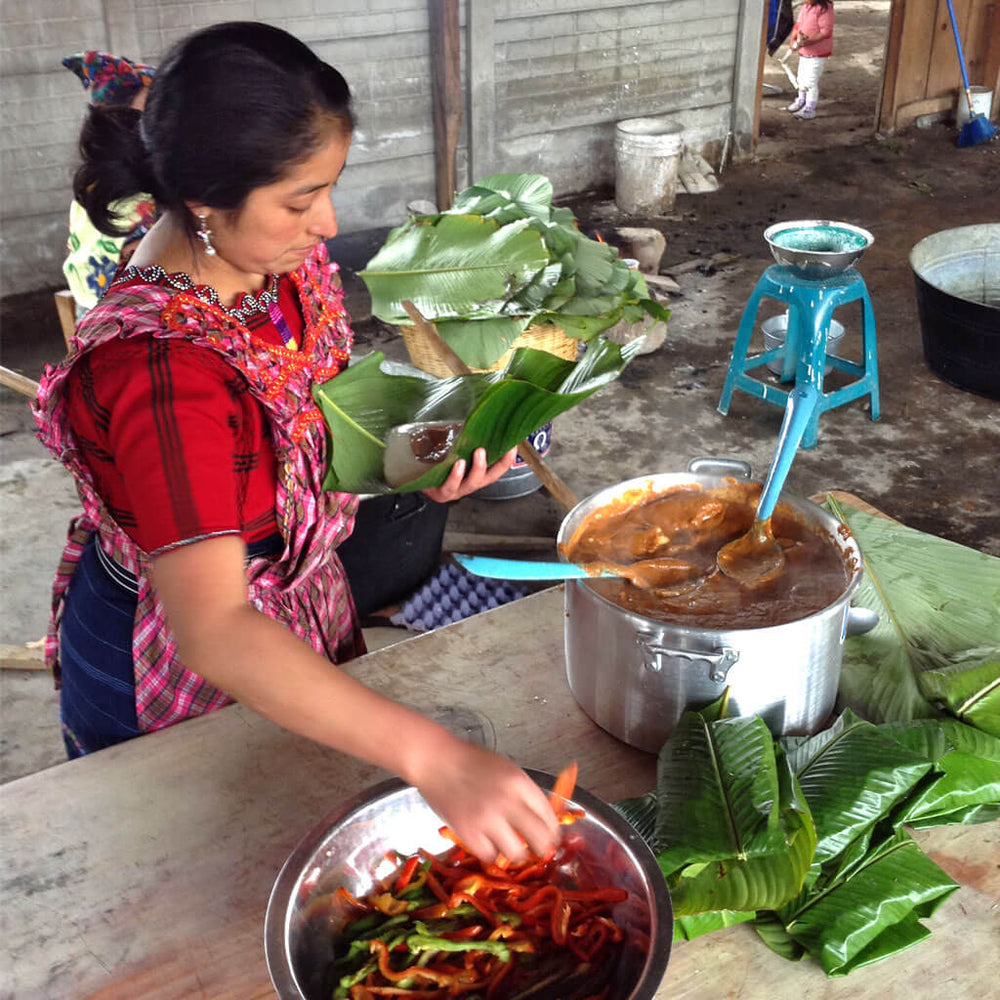Giving of Thanks from a Maya Perspective

The women of the Mayamam Weavers cooperative are Mam, indigenous people belonging to one of the 22 ethnic groups of Maya people in Guatemala. Mam people speak their own language and live primarily in the western part of Guatemala. As one of the oldest civilizations, Mayans have their own cosmovision which uderlies everything they do. It focuses on the balance of everything in nature and how everything in life is interconnected.
As we have shown in past blogs like this, the women call on their ancestral heritage when creating their beautiful textiles in vibrant colors. The embroidery motifs on the backstrap weaving include symbols of the Maya world view. On our Muted Earthtone Celebration Runner, the embroidered symbol is Q'anil which represents the four colors of corn; red, yellow, black and white which are the four colors of humanity.
Maya cultural values include respect for nature and the universe, the value of work in our life, cooperation with neighbors, fulfillment of commitments, as well as gratitude and giving thanks. “Gratitude and giving thanks” is the perfect theme to discuss as we approach Thanksgiving.
For Mayans, gratitude and giving thanks is present every day and everywhere. You can hear it in everyday conversation when people say “muchas gracias, muy amable” (many thanks, very kind) and the sincerity is obvious. Generosity and concern for family, for friends and for other members of the community is displayed every day by sharing food, visiting the sick or gathering for celebrations.

The value of giving thanks also extends to reciprocity. When you do a favor for someone, they are (morally) obliged to do something for you. Borrowing some sugar from a neighbor obliges you to return the favor when asked. It is also expected to express gratitude for your neighbors which is evident when everyone delivers paches to each other on Christmas Eve or New Year’s Eve, or Holy Week Bread during the Easter holidays. They are acts of giving that are customary to recognize the community and our relationships.

Gratitude also extends to thanking Mother Nature for the bountiful corn crop or the much-needed rain. Maya ceremonies are held in sacred places on mountain tops or alongside water. Although each ceremony has a common structure – fire, candles, incense are basic -- each one is specific to the particular occasion, need, and attendees. Some Maya groups have a special ceremony for gratitude for corn called "Pa'ach" or "Sac Ha’.” It typically involves prayers, offerings of corncobs, expressing thanks to the maize god for the bountiful harvest and the life-sustaining power of corn. It may include elements like singing and dancing, with the community gathering to celebrate their connection to the land and the gift of corn.

The women of the weaving cooperative look forward to practicing the value of giving thanks as they come together to celebrate the completion of a good year and express their gratitude for having work by sharing a special lunch together and recognizing each person for their contribution. Showing gratitude is an important part of the Maya culture whether it is giving thanks for your neighbor, for your ancestors or for Mother Earth.
–



Comments
Rachel Biel (Artizan Made)
Lovely post! We can learn from history and from other cultures and focus on gratitude as our fuel, rather than resentment or fear….
December 20, 2024
Leave a comment